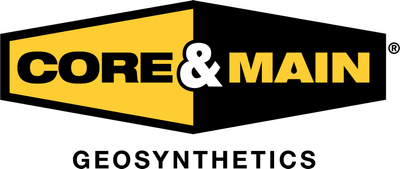

- Home
- Companies
- Core & Main Geosynthetics
- Products
- L & M - Model LM 2199 FW - ...
L & M - Model LM 2199 FW - High-Tenacity Monofilament Polypropylene Yarns
2199 geotextile is composed of high-tenacity monofilament polypropylene yarns, which are woven into a stable network such that the yarns retain their relative position. 2199 geotextile is inert to biological degradation and resists naturally encountered chemicals, alkalis, and acids. 2199 meets AASHTO M288-06 Class 2 and 3 for < 50% elongation and 15% to 50% and > 50% fines for Subsurface Drainage and Permanent Erosion Control.
Our Laboratories are accredited by a2La (The American Association for Laboratory Accreditation) and Geosynthetic Accreditation Institute – Laboratory Accreditation Program (GAI-LAP). NTPEP Listed
Percent Open Area (COE-02215) is not covered by our current A2LA accreditation.
This group adds a third dimension to the geotextile toolbox. In the manufacturing process, individual polypropylene filaments are woven together to form a fabric that resembles nylon screen cloth. Woven monofilaments are available with varying opening sizes to match up appropriately with site soil, and the result is a geotextile fabric that combines excellent flow ability with durability and strength.
Uses for woven monofilaments are many and varied. They often are implemented in specialized applications where permeability is important, such as in drainage swale sides and bottoms. More recently, these geotextiles have been used in the construction of filter bags used to protect storm water inlet structures from construction site sediment.
L & M Supply offers a wide variety of woven monofilament geotextiles uniquely designed to meet today’s requirements for filtration, separation and erosion protection. Manufactured using high strength UV stabilized yarn and designed to meet specific characteristics required for today’s engineering challenges. Monofilament fabrics provide exceptional consistency in AOS and water flow properties.
Benefits:
- Durable polypropylene yarns woven for dimensional stability and consistent pore size
- High permittivity and water flow rates
- Excellent resistance to UV degradation
